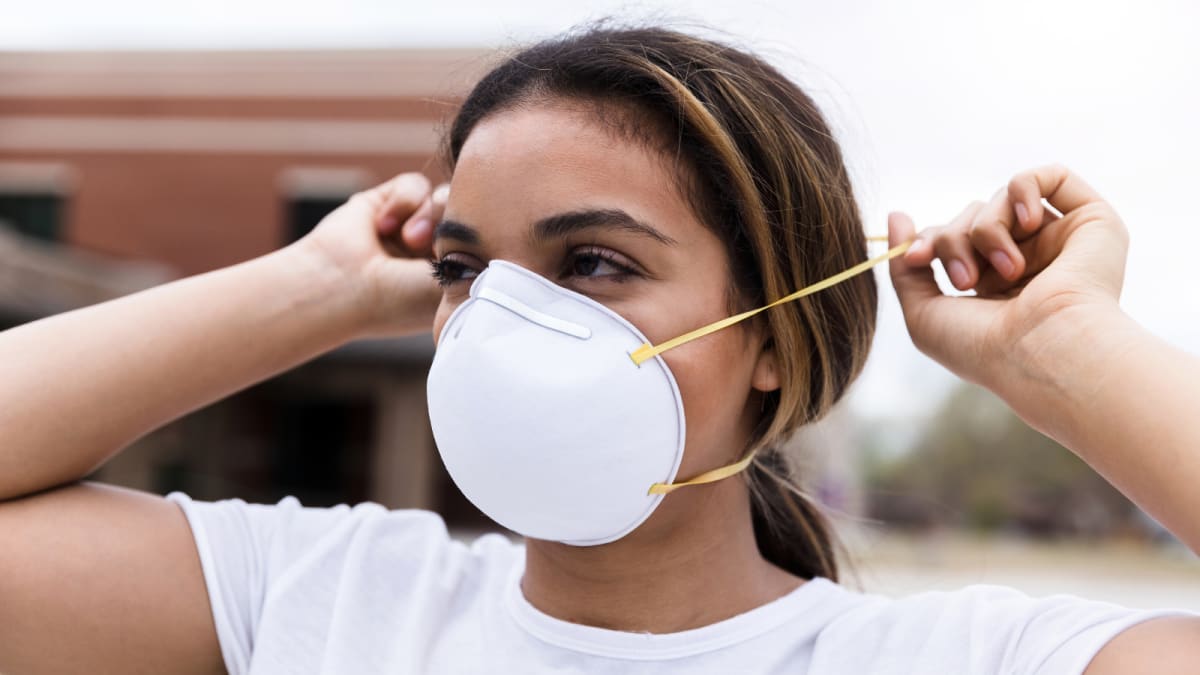Health officials for the Centers for Disease Control and Prevention (CDC) announced an update to their COVID-19 guidelines on Friday. Covering COVID-19 and other repository viruses such as influenza and respiratory syncytial virus (RSV), the new guidance revision shortens the time people are expected to isolate themselves. This marks the first revision to the COVID-19 guidelines since 2021.
According to the CDC, this change is meant to target these respiratory illnesses more broadly, as they share similar symptoms, means of spread, and containment strategies.
CDC officials still stress the importance of preventing the spread even amid the shortened isolation time. “We’re in a different situation, but we must use the tools that work to protect against respiratory viruses,” says CDC Director Mandy Cohen. “That’s why our updated guidance emphasizes some core prevention actions to protect against severe illness from respiratory viruses.”
Here is what to know about the updated COVID-19 guidelines and how to continue staying safe.
What are the new COVID-19 guidelines for 2024?
The CDC recommends that people who test positive for COVID-19 base their isolation period on their symptoms. Individuals can now end their isolation if they’ve been fever-free for 24 hours and other symptoms are improving. Preventative strategies like wearing a mask are recommended for five days after ending isolation.
COVID-19 symptoms
The most common symptoms of COVID-19 are as follows:
Ways to curb the spread of COVID-19
Wear a mask
Whether you’ve left isolation and you’re trying to prevent others from getting sick, or you’re trying to avoid getting sick yourself, wearing a quality mask remains the most effective way to stop the spread of COVID-19. A KN95 or N95 mask can block 95% of the particles responsible for the transmission of COVID-19.
MAGID N95 Respirator Masks
A mask if the most effective way to curb the spread of COVID-19.
Wash your hands often
Another way COVID-19 can spread is by touching your eyes, nose, or mouth after touching a surface that has COVID-19 particulates on it. You can prevent this by washing your hands. It’s better to use soap and water, but hand sanitizer with at least 60% alcohol will work in a pinch.

Purell Advanced Hand Sanitizer Refreshing Gel
Disinfect your hands with hand sanitizer.
Monitor your symptoms with a thermometer
The presence of a fever (defined by the CDC as a temperature of 100.4ºF or greater) is the basis of the new isolation guidelines regarding, so it’s a good idea to check your temperature often with a thermometer. One of the best thermometers you can buy is this one by Femometer because of how quickly and accurately it gives readings. It also has a convenient high-temperature warning.

Femometer Thermometers
See whether or not you have a fever by using a thermometer.
Use an at-home test
While a negative test is no longer the basis for ending isolation, a positive test result is still helpful in determining if you have COVID-19 in the first place. Testing is recommended for individuals at risk of serious hospitalization, as the sooner they get a positive result, the sooner they can coordinate with a healthcare provider to get the care they need.

COVID-19 Antigen Self Test
A COVID-19 test is helpful to know whether or not you have COVID-19.

Dr. Debi Johnson is a medical expert and health journalist dedicated to promoting well-being. With a background in medicine, she offers evidence-based insights into health trends and wellness practices. Beyond her reporting, Dr. Debi enjoys hiking, yoga, and empowering others to lead healthier lives.








